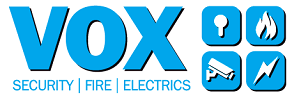Unfortunately, Fire is a hazard that can affect anyone at any time. The devastating effects caused by a rapidly spreading fire usually cause complete destruction of a property.
Fire always needs a source of ignition to start, then fuel and oxygen to continue burning, once it gets there it can often be an unstoppable force. We can not remove oxygen from the risk (it being in the air we breathe), so it is extremely important that we are aware of keeping all potential sparks and fuel separated to minimise the chances of it starting.
We can never truly eliminate the risk of fires starting; we can be mindful and take steps to reduce the risk. In the workplace or public buildings, there are strict health and safety regulations that have to be adhered to and these include implementing a suitable fire risk assessment.
Workplace Hazards
The workplace: A Fire Risk Assessment should start with identifying all fire hazards. Look for possible ignition sources? These can include anything involving heat such as cooking equipment, industrial processes, lighting sources, heating and electrical equipment. Even a blocked air vent or extraction fan can be a possible cause a fire to ignite.
Next, what if any materials are stored on the premises that could fuel the fire? These can include paperwork, packaging, textiles, wood, chemicals and flammable gases. A regular office environment usually has some sort of cleaning products, paperwork and boxes are stored.
Fire Alarms
Fire alarms are the most effective early warning system, it alerts everyone to the fact a fire has started, giving the best chance to taking action and get out of the building. In order to be most effective, you need to ensure the most suitable type of fire alarm has been properly installed, managed and maintained by a specialist contractor.
We are on hand to offer free advice on the most suitable fire alarm systems for your property and building usage. If you want to ensure the correct systems are in place call one of our customer service advisors today to book a specialist contractor who will be able to come and check your premises advice on the most suitable fire prevention equipment for you.
